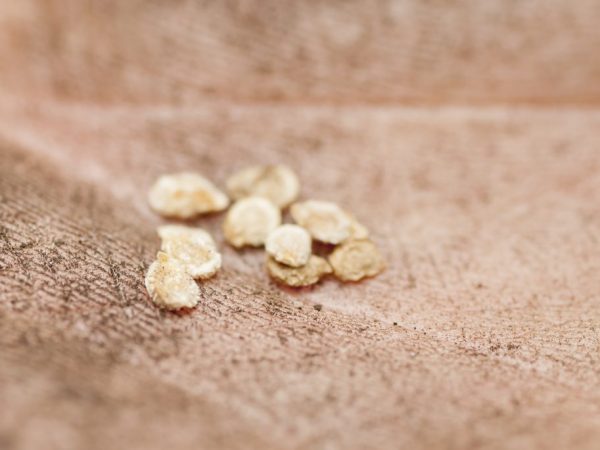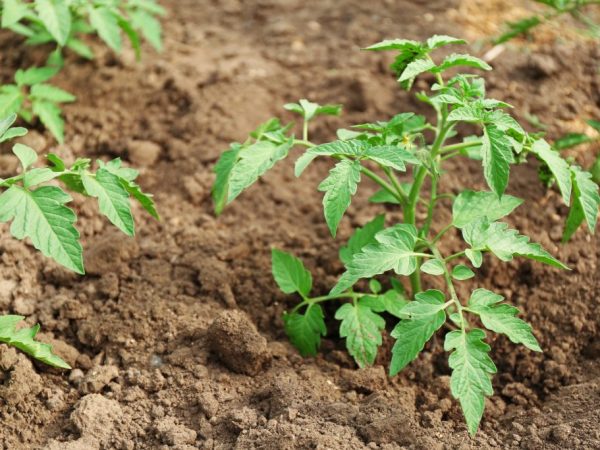Rules for sowing tomatoes with seeds in open ground
Sowing tomatoes with seeds in open ground is a backup option for plant cultivation, since it is not always possible to grow seedlings.

Rules for planting tomatoes with seeds in open ground
The method includes almost all of the same processes. The difference is that the seeds are immediately sown to a permanent place.
Seedling cultivation of thermophilic crops, including tomato, is used in those regions of the country where the duration of the growing season (in other words, the warm season) is less than the growing season of the tomato.
Advantages and disadvantages of the method
If you plant seeds directly in open ground, you can get a good result. After all, the seedless cultivation method has its positive aspects:
- Plants develop a strong root system. There is little space in the glass, so the roots are not as powerful. They also have healthier foliage.
- Seedlings after the first shoots adapt to ultraviolet rays.
- Tomatoes bypass the process of transplanting seedlings to a permanent place, therefore they do not lend themselves to additional stressful situations.
- With this cultivation, the plant is not affected by the black leg.
- In good light, the crop quickly catches up with seedlings.
The advantages of the seedless method include its low cost, both material resources (no need to buy containers for seedlings, spend electricity on heating and supplementary lighting), and physical labor (picking, transportation of seedlings to a permanent place).
Planting tomato seeds in open ground also has its drawbacks:
- Poor germination - may occur due to poor-quality seed, cold, a large amount of moisture.
- Lost seedlings - this problem appears with improper care.
The disadvantage of the seedling method is that seed germination in the field is always lower than in an artificial climate. Therefore, it is necessary to increase the number of seeds sown into the ground by almost 2 times.
Tomatoes prefer a sunny, draft-free area. The best predecessors for them are legumes, early white cabbage, pumpkins, zucchini, cucumbers. Can also be planted after onions, late cabbage.
You should not cultivate tomatoes in the area where potatoes, eggplants, and peppers have grown before. After all, plants infect the same diseases, the pathogens of which remain in the ground for several years. For this reason, it is not necessary to grow in one place for up to 4 years. Potatoes are also a bad neighbor. It can infect tomatoes with late blight. And for the Colorado potato beetle it will not be difficult to get to them.
How to prepare the soil
It is better to prepare the soil in the fall. To do this, after harvesting, ash, manure or compost are introduced into it. The earth is dug up and left in this form until spring. During the winter, she will get enough of useful substances. 2 weeks before planting, the soil is loosened with a rake, watered abundantly.You can cover it with plastic wrap - this will help warm it up faster.
If it was not possible to prepare the bed in advance, then sowing tomatoes in open ground with seeds can be done in prepared holes. They are made in turf and filled with purchased or leafy soil. If there is fertile soil under the top layer of the earth, you can only remove it. To warm up the soil, you can also cover the area with holes with foil.
Seeds
It is necessary to select the variety of tomatoes most suitable for seedless growing. Low-growing species are often planted, but you can also choose tomatoes that grow to an average height.
Since with the seedless method, tomato plants develop more slowly and do not have a run in growth compared to seedlings, the main criterion for choosing a variety is its early maturity and good harvest yield. After all, fruiting and harvesting will occur at the end of summer - the beginning of autumn, when frosts or prolonged cold snaps and rains are already likely.
How to prepare seeds
The seeds must be pickled and hardened. To do this, they are soaked for 15 minutes in a solution of potassium permanganate. For hardening, it is wrapped in a cloth in 3 layers and placed in the refrigerator for 1-2 days. You need to put it in the compartment where vegetables are stored. This procedure will accelerate future emergence and crop growth.

Seeds need to be hardened and germinated
Seeds can be planted dry or sprouted. For germination, they are placed on a damp cloth, gauze or bandage, folded in 3 layers. Leave in a warm place (temperature 26-28˚С). Make sure that the fabric does not dry out. When the seedlings appear, the tomato seeds are ready.
It is advisable to sow germinated seeds into the ground, this will shorten the time of germination. For many gardeners - amateurs who, for various reasons, do not have the opportunity to grow seedlings at home, this is the only way to get tomato plants without resorting to purchased seedlings.
Sowing
In order for the growing process to proceed safely, you need to know when to plant tomatoes in open ground with seeds. It is better to do this after the threat of frost has passed - after about May 14th.
For even sowing, add ballast to the seeds in a ratio of 1: 5. Humus, sawdust, earth are used as it. More seeds must be applied, since 100% germination cannot be guaranteed. 3-4 seeds are placed in the holes. the distance between them should be about 2-3 cm. In the future, the sprouts are thinned out (when they have 2-3 leaves). The one that needs to be removed is cut off. It is not worth pulling out, so as not to damage the root system of the strongest sprout.
Sowing tomato seeds in open ground can be done in a row method or in holes, after moistening the soil with warm water. If the seeds are not disinfected, you can pour a solution of potassium permanganate. The distance between the rows should be 60-70 cm, between the holes - 30 cm. Deepen by 3-4 cm. The soil is compacted from above with a palm. Watering is not carried out before the emergence of seedlings. After all, the sprouts will not be able to break through the resulting crust.
After sowing, the beds are covered with foil. It must be removed from time to time to prevent the appearance of mold on the soil. If the temperature is more than 18-20˚C, the plants can rot, so the film must be removed.
Care
Tomatoes need to create optimal conditions under which they grow healthy and strong, namely:
- watering;
- weeding;
- loosening the soil;
- formation;
- top dressing.
Watering, weeding and loosening
Watering is worth it as needed. After each moistening of the soil (and after rain as well), it must be loosened. The first shoots appear 12-25 days after sowing. During this time, many weeds grow on the garden bed, which must be periodically removed, followed by loosening the soil. At the same time, they spud the stem.
Formation

The variety of the plant will influence the formation
The formation process depends on the type of variety:
- Indeterminate varieties - form in 1 stem.
- Determinant varieties - form in 2 stems.
- Superdeterminate varieties - form depending on the growth of the bush, but more often in 3 stems, since the upward growth of this species of nightshade is limited.
All varieties require the removal of damaged or yellowed leaves during formation.
Fertilizer
First feeding
The first fertilization is carried out 2-3 days after thinning. For top dressing, an infusion of mullein is prepared: 2 buckets of substance are taken for 20 liters of water. Insist 10-12 days. The fertilizer is diluted with water in a ratio of 1:10. 1 liter of the product is poured under each plant. Instead of mullein, you can take chicken droppings, but then it is necessary to breed in a ratio of 1:15.
Some gardeners use mineral fertilizers. For this, such a solution is prepared: 15 g of ammonium nitrate is given for 10 liters of water. After top dressing, the soil is mulched.
Second feeding
The second fertilization is done when the fruits begin to grow. Superphosphate and potassium chloride are used from chemicals. The first drug is dosed in an amount of 20 g per 1 sq. m., the second - 10 g per 1 sq. m. They are introduced into grooves with a depth of 6-7 cm. The distance from the tomatoes should be 20 cm. The soil should be watered during top dressing.
Pests and diseases
When planting a tomato in the ground with seeds, you need to take care of the health of the plants. It is always easier to prevent diseases than to cure them. Therefore, for this purpose, spraying tomatoes with garlic infusion can be used. It is prepared like this:
- take 1.5-2 tbsp. garlic, chopped;
- pour hot water (boiling water cannot be used);
- add a little potassium permanganate;
- bring the volume of the product with warm water to 10 liters;
- mix, filter (no need to insist).
Liquid soap can be added for better adhesion. 3-4 treatments of plants are carried out at intervals of 6-10 days.
The spread of diseases is facilitated by thickened plantings, so this must be avoided. Mulching the soil will also be beneficial for the health of the tomatoes.
To prevent late blight, you need to plant early-maturing varieties that will give a crop before the onset of the rampant disease. For the treatment of late blight, tomatoes are sprayed with 1% Bordeaux liquid or a solution of copper sulfate: 40-50 g per 10 liters of water. During the growing season, 2-3 treatments are carried out.
Conclusion
It is quite possible to grow a good harvest of tomatoes using the method of sowing seeds in open ground. The lack of seedlings should not deprive the gardener of the desire to cultivate tomatoes.
You just need to take into account the climate of your region and choose the appropriate variety. Observing all the rules of cultivation with seedless cultivation, you can achieve a fairly high result.


